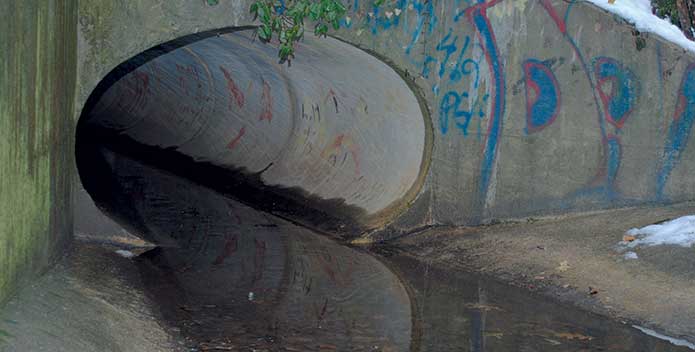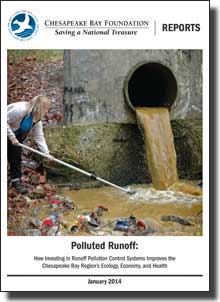The following six elements (known as minimum control measures or "MCMs") are required by the MS4 permit program:
- Public Education—informing individuals and households about the pollution potential of common activities, such as washing cars, applying lawn chemicals, changing motor oil, and disposing of leftover paint and household chemicals so that individuals can take direct action to reduce pollution.
- Public Involvement—involving the public in the development, implementation, and review of an MS4's stormwater management program, as well as facilitating opportunities for educational and volunteer programs like stream-cleanups and riparian plantings. Public outreach is an important part of this MCM.
- Illicit Discharge Detection & Elimination—practices for identifying and eliminating discharges that are not composed entirely of stormwater and spills to storm drain systems. For example, washwater, oil, paint, and septic or sewage overflows.
- Construction—practices for municipalities and construction site operators to address stormwater runoff from active construction sites. This includes erosion and sediment control, procedures for reviewing construction site plans, considering information submitted by the public, and inspection and enforcement of stormwater requirements.
- Post-construction—practices for municipalities, developers, and property owners to address stormwater runoff on property after construction activities have completed. For example, landscaped "infiltration islands," use of porous asphalt, grassed swales, and much more.
- Pollution Prevention/Good Housekeeping—practices for municipalities to address stormwater runoff from their own facilities and activities, including winter road maintenance, infrastructure repair, automobile fleet maintenance, street sweeping, and landscaping to name a few .
In addition to these six MCMs, most state MS4 permits impose other requirements. In the Chesapeake Bay watershed, these may include detailed local implementation plans for meeting local stream and Chesapeake Bay "blueprints" for meeting water quality standards (formally called Total Maximum Daily Loads). Other requirements may include reducing or treating hardened surfaces, such as parking lots, or stream monitoring.
(For more information see http://water.epa.gov/polwaste/npdes/swbmp/index.cfm)
As part of our on-going commitment to helping communities reduce stormwater pollution, CBF provides a "Best Practices Guide for Stormwater Utilities, Fees, and Authorities," as well as occasional webinars and other resources.
Why Is Stormwater Management So Important?
Rain water carries pollutants off of the land into the water in both urban and suburban environments, and from construction sites. When rain is allowed to run off of an urban landscape or construction site, unimpeded, into a body of water, it carries pollutants with it. These pollutants can include dirt and sediments, pathogens, fertilizers/nutrients such as nitrogen and phosphorus, hydrocarbons and petroleum compounds, and metals. Hard surfaces such as pavement, compacted gravel, roofs, as well as reduced tree canopy and compacted turf increase the volume and speed of rain water runoff, which can cause erosion that deposits even more dirt and pollutants into the water.
Additionally, because our towns and cities have so much impervious surface and water cannot slowly filter into the ground, runoff often causes localized flooding of streets, yards, basements, and commercial areas. Effective stormwater management can reduce all these problems.




